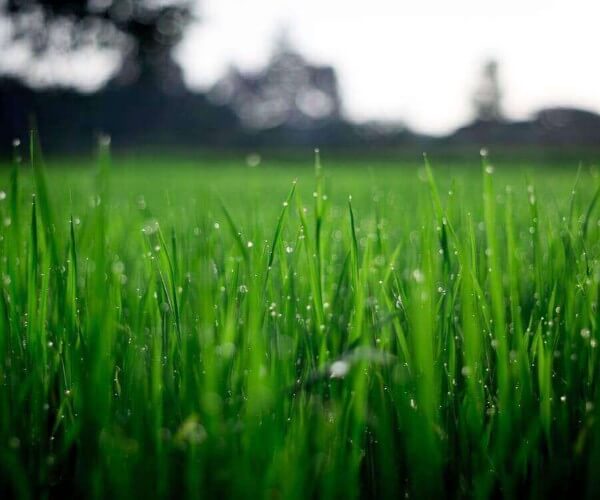- Lawn Turf
- Artificial
- Soil
- Timber
- Composite Decking
- Paving & Stone
Get In Touch With Our Experts Today!
Give us a Call! - Seed & Fertiliser
- Dressing
- Bark

November 03, 2017
You may have seen a viral news story a few weeks ago about a man in Pennsylvania called James Callender, who encountered several ‘bubbles’ of trapped water within his lawn – these are known as ‘Lawn Blisters’. Whilst it is somewhat rare to have domestic lawn blisters as extreme as James, we thought it would be an interesting situation to explore, answering how they appear in the first place and how you would go about dealing with them.
SO WHERE DO THEY COME FROM?
Lawn blisters occur when a pocket of trapped water forms below the grass surface, often between the grass and a layer of plastic sheeting that has been laid below the turf. Plastic sheeting is used where the soil in the area is particularly bad – good soil is scattered onto the plastic liner, allowing you to lay and grow good, healthy turf. There can then be several reasons as to why lawn blisters develop, most commonly being an influx of water into the ground. In James’ case, extremely heavy rain and the accumulated rainwater created a ‘bubble’ beneath the surface. Another common cause is a burst water pipe below the surface and even sometimes a build-up of natural gas. There has also been reports of lawn blisters having been created in Siberia as a result of water being trapped between the surface and the ‘permafrost’ that is found beneath it – obviously this would only be the cause in polar regions.
HOW DO YOU GET RID OF THEM?
As you can see in the footage, James uses a gardening tool to essentially hack holes across his lawn, tearing the turf and causing pools of water to form on the surface. Whilst this drained the blisters, James significantly damaged his lawn in the process. Small lawn tears can be fairly easily repaired, but it would be much better for your lawn to use one point for drainage and then just have one area of damage to repair at the end. Where possible it would be ideal to try and collect as much of the drained water as you can so that your lawn doesn’t become sodden. You should also try to drain any of the excess surface water too. Obviously, it’s important to determine the root cause before taking action – for example, if the problem is a damaged water pipe then that should be fixed too in order to protect your lawn best.
HOW LIKELY IS IT THAT THIS WILL HAPPEN TO ME?
It’s tough to answer this one because burst water pipes can happen whenever, wherever. As I said, they aren’t everyday occurrences in domestic gardens, especially in the UK, as we don’t experience extended or extreme adverse weather conditions. Lawn blisters are most commonly found on golf courses – Greywolf Golf Course, Canada reported a lawn blister that was 18 inches high at its peak, caused by a broken pipe below the fairway. Although lawn blisters can develop in any grassy area at any time, they are really quite rare across the UK, with little reports of such cases as extreme as James’.
You can watch the full footage of James here: https://www.youtube.com/watch?v=O8eQLavRaXM
CALL US NOW ON 01234 818 253